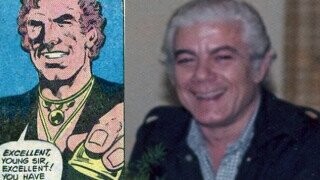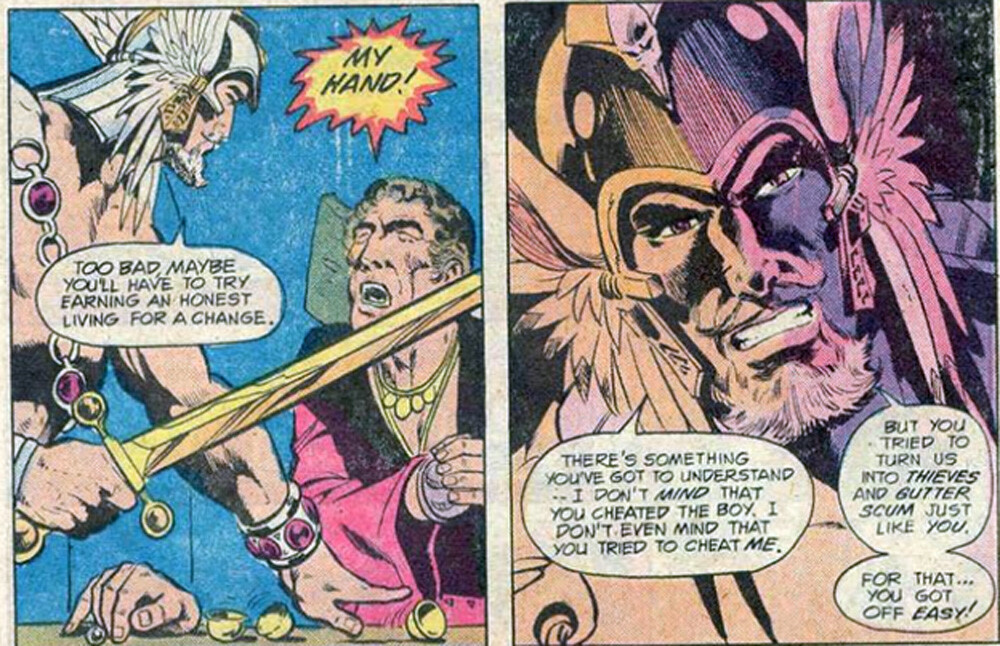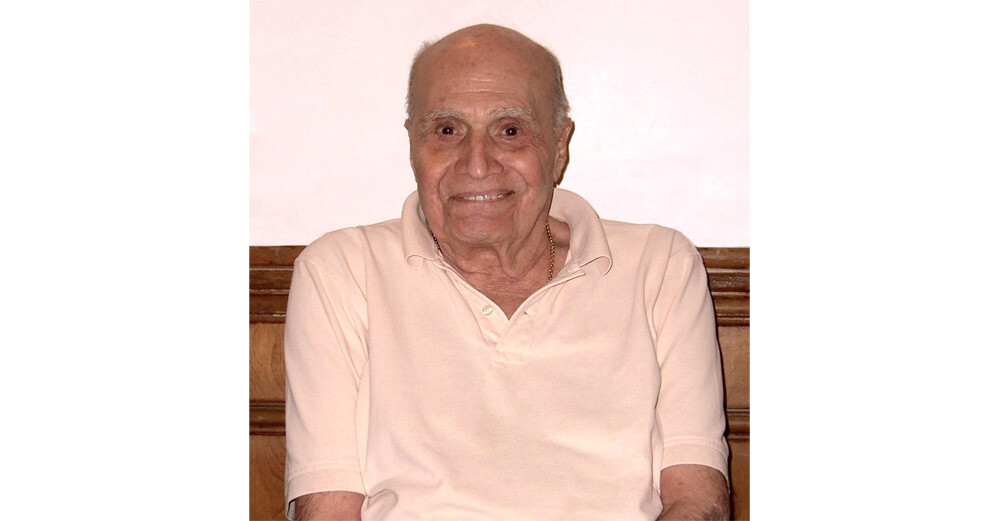The Mafia-Connected Madman Who Once Worked For Marvel

Fasten your seat belts, True Believers! We're about to tell the tantalizing tale of one of Marvel's most colorful comic characters! No, it's not Iron Man, Spider-Man, Thor, or the ever-lovin', blue-eyed Thing. It's the fastest comic book inker in the cosmos, "Valiant" Vince Colletta!
Vince was no ordinary Marvel artist, some bespectacled craftsman hunched over a drawing table. Comics historian Reed Tucker describes Colletta as "a Godfather-type straight out of central casting, with a salesman's charm and a Hollywood demeanor. His prematurely graying hair was immaculately styled at all times, and he dressed flashily, often with multiple gold chains. He once turned up at a convention wearing a white suit, white shoes, and black shirt, unbuttoned nearly to his navel."
Don't Miss
In other words, he was an older version of John Travolta's Tony Manero with ink stains on his hands instead of paint from his dad's store. The look alone made Colletta stand out among his comic book peers. But the look was only the beginning.
"He Liked To Let Everybody Know He Was Connected With The Mob Or Something"
To comics colleagues like Joe Staton, Colletta often hinted that he ‘knew guys who knew guys.' And the idea wasn't hard to believe. He was born in the Italian village of Casteldaccia to a father who actually did have Mafia ties, according to Colletta's son, Franklin. Vince's dad was a "tough guy, a pretty high-level mafioso," Franklin says. "We were a mafia family in Sicily." When Colletta's old man got in trouble with the law, the family hightailed it to Brooklyn, New York. There, young Vincent found he had an eye for art, especially for drawing beautiful young women.

Vince Colletta
That talent landed him in the romance comics business, where he'd eventually meet and befriend Marvel's Stan Lee. Though Colletta likely wasn't in the Mafia, it was still thrilling for Stan to know someone who was, shall we say, mob-adjacent.
Jim Shooter, who would himself become Marvel's editor-in-chief, recalls the story of Colletta introducing Stan to legendary mobster Frank Costello. Back in the 1960s, Vince and Stan were eating at a local restaurant when Vince spotted Frank Costello entering with his entourage. Costello was the "retired" head of the Luciano crime family. If you lived in New York around this time and pictured a mob guy, you were likely imagining Costello's scowling mug.

Vince went over to say hello to Costello (as noted, Colletta knew guys) and Stan was beside himself with excitement. The legendary comics chief asked for an introduction, but Vince was wary. You don't just go ask guys like Frank Costello for an autograph. But Stan was persistent and when he promised to be on his best behavior, Colletta agreed to a quick hello.
"So, Vince and Stan went over to Costello's table," says Shooter. "Vince introduced Stan. "Mr. Costello, my friend would like to meet you. This is Stan Lee—" Whereupon Stan stuck his hands up in the air and said, “Pleased to meet you! Don't shoot!" (Goddammit, Stan.)
Colletta Was No Stranger To The Shadier Side Of The Art World
In addition to having infamous friends, Colletta worked on what some might consider the fringes of the publication biz. During the 1950s, when comics were on a decline, he found work with Charlton Comics. But he had side hustles too, working for Charlton's parent company, Monarch Publications and its line of lurid girly magazines and books. Vince was their go-to photographer for "revealing photographs of cheating spouses and scantily-clad women."

Monarch
Working with glamor girls continued as he made his way into the Marvel universe. Comics biographers describe Colletta as a man with an appreciation for female company. "Colletta would arrive with white hair groomed, impeccably dressed in an overcoat, with young women on each arm." Unlike other schlubby comics artists, Colletta would stop by the office to pick up artwork from the back of a stretch limousine, "again with beauties by his side." Make of it what you will, but most comic book inkers could barely afford cab fare, much less a chauffeured limo.
After he was made DC Comics' art director in the late 1970s, writer Paul Kuppenberg marveled at the parade of young women stopping by for a visit. "I could see Vinnie's door pretty clearly. He had a bookie who would come pretty regularly, and there were a variety of young ladies who would arrive, and the door would close and not open again for a half-hour. I assume it was Vinnie doing large model sketches."

There was no denying Vince was a ladies' man. In addition to the numerous fashion models, he claimed to be cozy with the girl from a new James Bond movie. There were even rumors that he'd "shop dates" to comics editors in exchange for inking work.
The Inking Work, Uh, Wasn't Always Great
While Colletta didn't have a reputation as a great artist, he was revered by editors for being fast. Being fast was a superpower. As a new wave of groovy, long-haired artists arrived in the 1970s, publication deadlines were frequently in danger of being missed. Enter Vince Colletta. Some other inker flaked out on a book-length assignment? Give it to Vince and he'd get it finished over a weekend. This was no small deal. While comics are a creative medium, they are also a for-profit business. Colletta was a pro's pro who always made sure the product got finished on time.

But speed came at a cost: Quality. Large areas to be filled with black were sometimes left untouched. Penciled details were ignored. And while most inkers use a combo of brush (for heavy lines and emphasis) and pen nibs (for finer work), Colletta stuck to the nibs for a quicker sprint to the finish line. Comics royalty Neal Adams and Alex Toth stipulated that Colletta was not allowed to ink their work. Colletta once worked on an Adams story and Adams took it back, re-inking 80% of the job for no pay—just professional pride.
There are YouTube videos devoted to painting Colletta as "The Inker Who Ruined Jack Kirby's Art." While some praise Colletta's work on Kirby's Thor, where fine-line inking meshed with the woodcut feel of Norse mythology, the inker undeniably took shortcuts along the way.

Check out this example of Loki terrorizing the good citizens of some major metropolis. Not only does Colletta ignore many of Kirby's detailed character flourishes, he simply erases entire characters! It's this kind of hurried, half-assed work that led Kirby's assistant, Mark Evanier, to lobby to get Colletta removed from the artist's new titles at DC Comics.
Lousy Art Was Just One Way Vince Made Enemies Of Fellow Creators
But there was another reason to fire Colletta from the DC work: Vince got busted for posing as a comics double agent.
Kirby's exodus to DC in the early 1970s was a huge freaking deal, as the artist was considered one of the key players in Marvel's climb to the top of the comics ladder. Marvel bigwigs were understandably worried that Kirby switching sides could tip the balance in DC's favor. To make matters worse, Kirby's New Gods concept had been first offered to Stan Lee, who didn't think enough of the idea to let Jack run with it. Now Kirby had taken the concept to the Distinguished Competition. He was so paranoid that Marvel would rip off his new ideas that the finished artwork was kept locked up in the DC offices.
Jolly Jack was right to be suspicious. Perhaps it was Colletta's experience making time with Bond girls, but the silver-haired rascal was adept at playing spy. He was one of the only artists working for both companies at the time and it wasn't long before a pre-publication copy of New Gods #1 was pinned to the wall of the Marvel bullpen.

Kirby was pissed. And he wasn't surprised when Colletta was identified as the leak. "He was just trying to curry favor ," says comics writer Gerry Conway. "He was always trying to do that." With the theft confirmed, editor Carmine Infantino fired Colletta from the Kirby gig. (More on that in a bit.)
Another artist, Mike Grell, didn't care for Colletta's scratchy work on his Warlord series and begged for another inker. He even went so far as to ink his own work and hold back the finished art until the last second so the company had no choice but to publish the non-Colletta version. It worked once, but soon Colletta was back on the book. So Grell found another way to express his displeasure. He created a character named Tevalco El Cint—a nonsense name that not-so-cleverly rearranged the letters in ‘Vince Colletta'.

Marvel
Tevalco was a flashy dresser with open shirts, a con-man who wasn't above a little deception to get his way. Sound familiar? But in the comic, his cheating had consequences:

Marvel
Yep, Grell cut off Colletta's inking hand. Not that the maligned artist seemed to mind. Ironically, Colletta was the one who inked the story. Other creator conflicts weren't so friendly. We can assume artists, writers, and editors get into it all the time over creative differences. But those arguments must feel a little different when one of the artists hints at his Mob ties. Like the time Vince threatened to throw Marvel chief Roy Thomas out a window after he found out Thomas was going to remove him from the Thor inking job.

Then there was the Jim Shooter letter. Colletta and Shooter were pals, and when Marvel fired Shooter from its top job in 1987, Colletta lost it. In a well-circulated note, the inker let loose with a profanity-laden excoriation of his former co-workers. Here's a sample (with punctuation and spelling errors intact):
You are the droppings of the creative world. You were destined to float the cesspool till urine logged and finally sink to the bottom with the rest of the shit.
For all he did for you ... you repayed him by attacking him like a pack of yellow, prickless f***ts. Ripping away his flesh from his body and laughing and pounding your chest like conquering ghouls and long after his bones were dry you continued to pour salt on them to squeeze every ounce of pain out of him.
Yikes.But the most chilling example of why you didn't want to mess with Colletta was the fate of DC chief Carmine Infantino in 1976. Infantino was tough for creatives to deal with and his business acumen wasn't great either, losing a million bucks that year. So it wasn't a total surprise when his bosses gave him his walking papers. But was dollars and cents all there was to it? Remember, Infantino was the editor who pulled Colletta from those New Gods books after he was busted for stealing Kirby's artwork. Seems like a good reason to lose a gig, but Colletta still held a grudge. And Vince was a guy who knew guys.

When Infantino got the ax, there were hushed whispers around DC that "Colletta had pulled strings with some of the shadier elements rumored to be connected to Warner Bros. to get Infantino ousted." Writer Gerry Conway ran into Infantino on his way to the elevators on the day the boss was canned. In Conway's estimation, Infantino looked pretty shaken up. "There are going to be some changes around here," Infantino confided on his way into the elevator. "I can't really talk about it."
As the elevator doors closed, a second set on the next elevator opened. Out stepped Colletta. "I finally got rid of the bastard!" Revenge, as Don Corleone said, is a dish best served cold.
